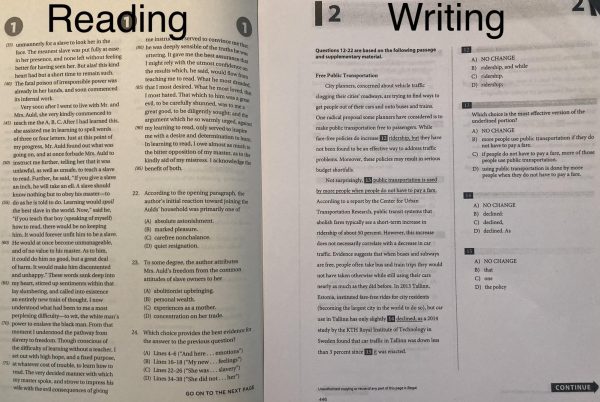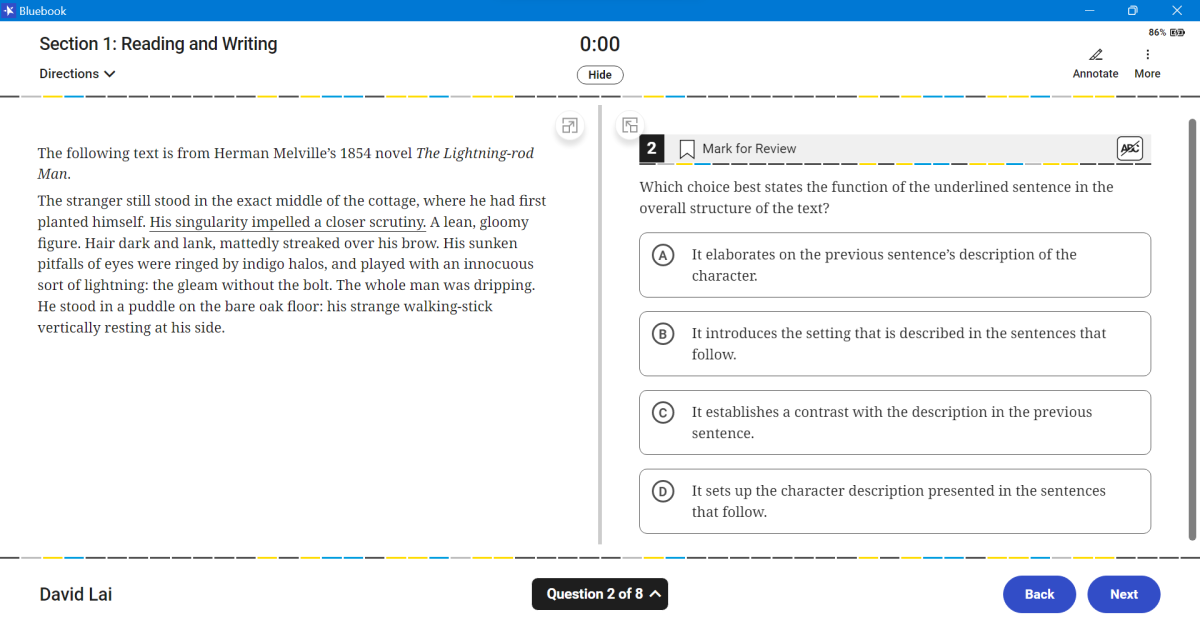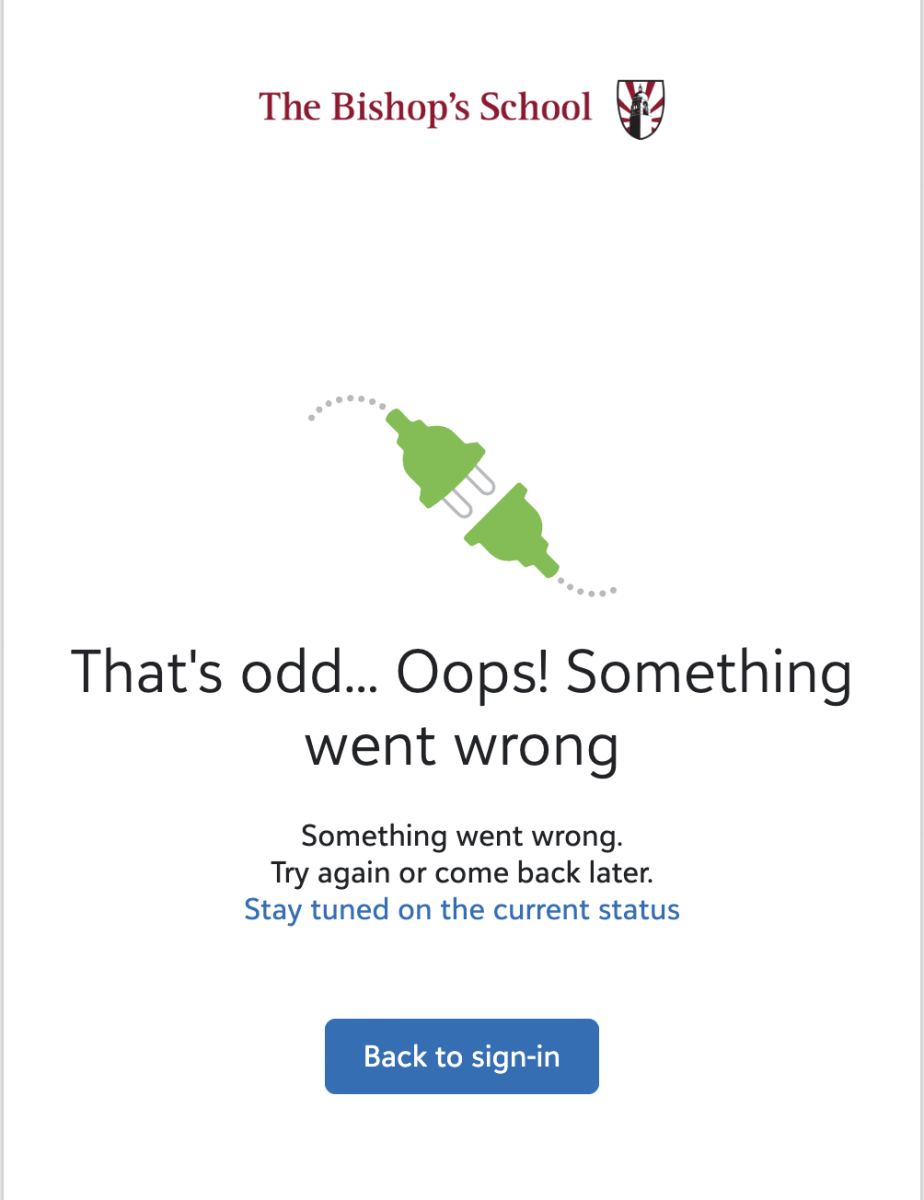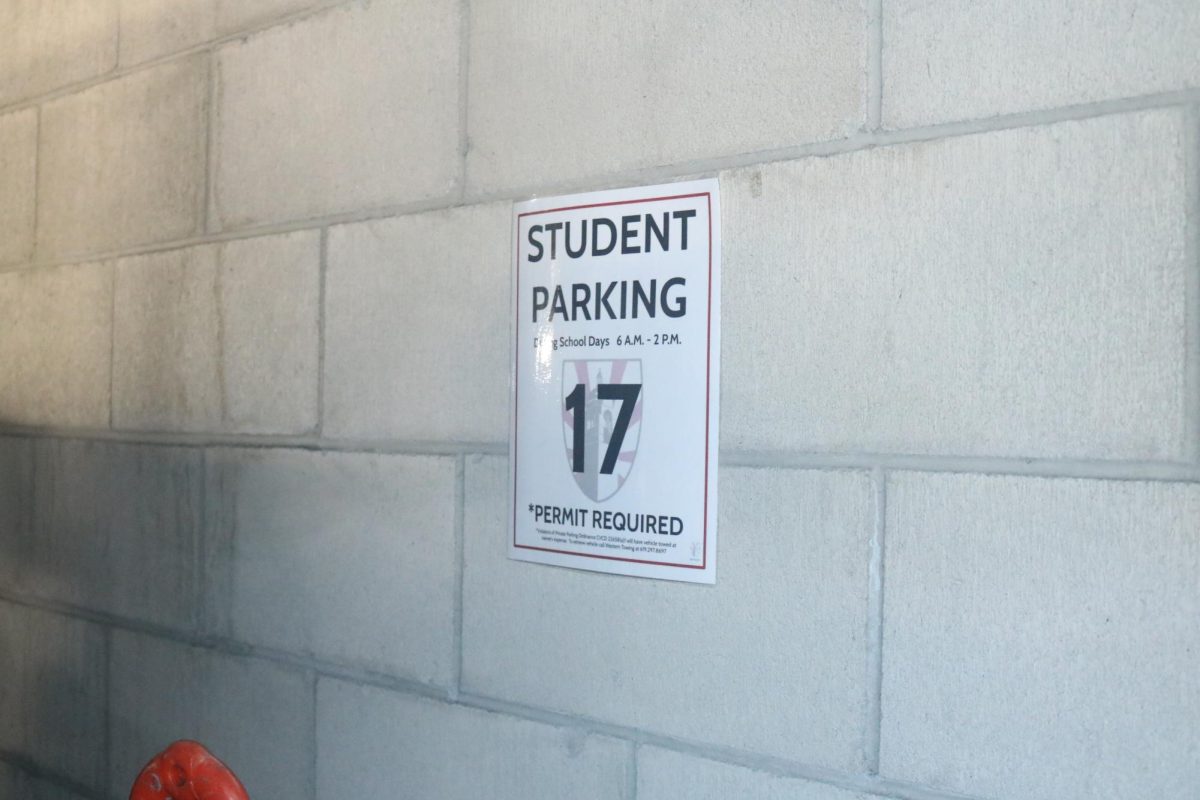
As winter turns to spring, the SAT is also entering a new season — a digital season.
In 2016, the SAT underwent numerous changes: the scoring scale changed from 2400 to 1600, the essay became optional, and multiple-choice answers were reduced to just four options (A, B, C, or D).
Fast forward to 2023, and College Board is making another groundbreaking shift.
To adapt to the digital age, College Board is making the SAT all online, among other changes to the timing, sequence of questions, and more. With these numerous changes come many unknowns: specifically, how will this impact students’ preparation for and performance on the test, as well as the college admissions process?
According to Priscilla Rodriguez, vice president of College Readiness Assessments at College Board, “The digital SAT will be easier to take, easier to give, and more relevant.”
What are the changes?
Besides the arguably most important shift from pencil to computer, there are many minor changes to the test. According to Prep Scholar, the digital SAT will only be two hours and 14 minutes — one hour and one minute less than the paper test. Instead of having one section of Reading, one section of Writing, and two sections of Math split into no calculator and calculator, the new format will only consist of two “modules”: Reading and Writing is all one module and Math is the second. Test scores will be released within just a couple of days compared to two weeks.
Furthermore, students will have access to a digital countdown clock. They’ll be able to mark questions they would like to revisit. They can access a digital sheet containing helpful equations for the math section and a built-in graphing calculator for those who forgot to bring an SAT-regulated calculator.
According to an IVY Scholars article, inside the overarching two modules, there are two subsections for each module. The Reading and Writing Section 1 is 27 questions in 34 minutes and the Reading and Writing Section 2 is also 27 questions in 34 minutes. The Math Section 1 has 22 questions in 35 minutes and Section 2 has the same time and amount of questions as Section 1.
Compared to the paper SAT test which had a 10-minute break after the reading section and a five-minute break between the non-calculator and calculator math sections, the digital SAT test has only one break, a ten-minute break between the two modules.
The IVY Scholars article also explained that the College Board is making the exam adaptive, meaning that when you complete the first part of the Reading/Writing section, your performance determines the difficulty of the questions you are given after. The same applies to the math section.
Because this exam is adaptive, not everyone will have the same questions. Thomas Yerbury (‘25) reacted, “I believe that it’ll be a bit more difficult to take the test but it’ll overall be a better way to assess a student over a larger gradient of questions.”
On the contrary to Thomas, Bryan Korn (‘25) said, “I think the current SAT gives a better indication of college readiness for students, primarily because it makes us think more. From what I know, the digital SAT is far easier and shorter, which might inaccurately inflate everyone’s score, even if it’s not representative of their true abilities.”
Similar to Bryan, Selene Wang (‘25) said, “Regarding the adaptive SAT, I felt that [the change] was really unnecessary. Despite the fact that the online SAT is getting shorter, I felt that the paper test, based on my experience with the PSAT, did not pose any significant logistical or content-related challenges.” Selene expanded, “Though a digital test would probably be faster for [the] College Board to grade, I think it also poses accessibility issues for those without access to a computer or other digital device.”
Furthermore, Selene said, “The adaptive portion adds anxiety for students because if you feel the questions becoming easier, you will know that you got something wrong, and also we are practically unable to check any of our answers, which again, is anxiety-inducing.”
For the reading section, each question will be about one passage. For the writing section, questions will no longer have a “No Change” answer option. Moreover, writing questions about graphics has been simplified for digital devices, and idiomatic expressions, like “hold your horses,” will no longer be included.
For the math section, test-takers will be permitted to use an approved calculator — most graphing calculators (ex. Ti-84), all scientific calculators (ex. Casio fx-570CW), and all four-function calculators though they are not recommended — or a built-in calculator by Desmos Studio Corporation, through College Board’s Bluebook app, the official testing software.
What are the benefits and drawbacks of this change?
These changes are bound to benefit students. According to Director of College Counseling Ms. Wendy Chang, the advantage of a digital test is that students “actually will know how to take the SAT on a computer instead of taking it on paper. We are not used to doing everything [while] holding a pencil and taking a paper test for three hours on end.”
Another benefit is the shorter testing time. “The original tests are so long that sometimes it is a test of endurance as opposed to being a test of knowledge,” Associate Director of College Counseling Marsha Setzer said.
However, Ms. Setzer also pointed out that “some students might find computers very distracting and they aren’t going to be able to show their best performance. Some students are just going to be naturally more comfortable with one format over another and that is potentially going to affect how they perform.” Ms. Setzer continued, “It is like any test; it will suit some students better than others.”
Although SAT scores are usually included in college applications, both Ms. Setzer and Ms. Chang don’t foresee significant impacts from this format change on college decisions. “I don’t think that it will be a game changer. It really may not affect students in a place like Bishop’s so much since we are a very well-resourced school,” said Ms. Chang.
“My guess is that they are going to acknowledge that this is a completely different test-taking format so if they see a student who didn’t score as well as maybe their grades would suggest, they might be like ‘Oh, that might have something to do with the testing format,’” Ms. Setzer added. However, since the change hasn’t happened yet, it is hard for college counselors to predict what colleges are going to do and see if it actually is going to affect college decisions.
How To Prepare For The Digital SAT?
This new adjustment from paper to computer should not change much in one’s preparation besides the fact that people will need to practice using the digital format.
TestInnovators gave four simple steps for students to prepare for the Digital SAT. Step one is to take a full-length, computer adaptive test via College Board’s bluebook. Step two is to review the results of your practice tests and identify which areas of each section have room for improvement. The third step is to target the areas you previously identified and practice on those topics. The final step is to repeat this process as many times as possible.
Regarding preparation, Ms. Chang said, “Instead of just sitting and bubbling and bubbling, students should practice using the new interface to help them better prepare.” Ms. Chang further explained that “College board is putting out a number of resources for students to actually do their practice online. There are practice interfaces that students can actually start using now to get ready for it.”
According to College Board, there are many resources out there for the digital test. For example, Khan Academy has high-quality official Digital-SAT prep that contains skill and knowledge-building activities to help students prepare. There is also a book titled The Official Digital SAT Study Guide. There are also other books besides College Board’s book, for example, Barron’s Digital SAT Study Guide, and The Princeton Review’s Digital SAT Study Guide.
Next year will be a whirlwind for the SAT as the effects of the test on students and the test’s impact on college decisions are still up in the air. Considering this, get your mind, calculator, and knowledge ready for the all-new spring 2024 SAT digital exam!



















